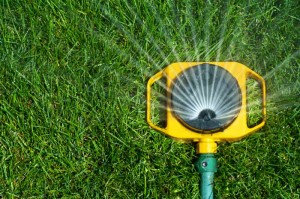 An essential aspect of landscape maintenance is insect control. Problem insects can affect the vigor of plants and landscapes, either through disease, insect feeding or other destructive activities. Insects can also invade the interior of a home in search of food, water and shelter, becoming a general nuisance. With the recent mild winter across the U.S., insect activity is occurring even earlier this year. This means there is a greater chance that homes and landscapes will be infested by pests this summer.
An essential aspect of landscape maintenance is insect control. Problem insects can affect the vigor of plants and landscapes, either through disease, insect feeding or other destructive activities. Insects can also invade the interior of a home in search of food, water and shelter, becoming a general nuisance. With the recent mild winter across the U.S., insect activity is occurring even earlier this year. This means there is a greater chance that homes and landscapes will be infested by pests this summer.
Here are some tips to make your home and landscape less of a target for infestation:
Choose plants wisely: Many insect and disease issues can be prevented by selecting plants that are less prone to insect problems. For example, native plants are less inviting to pests when planted where sun and soil are right for them.
Combat insects with essential nutrients: One of the best defenses from problem pests is a strong, actively growing, well-maintained plant. Proper fertilization is essential to maintaining landscape beauty and plant development, helping sustain optimum plant growth and resistance to insects, diseases and environmental stresses. When fertilized properly, plants are supplied with the essential nutrients (i.e. nitrogen, phosphorus and potassium) they need for strength and growth.
Know the symptoms: Often, the evaluation of plant symptoms can provide an effective indication of the insect type. There are three common types of problem insects:
• Sucking insects and mites cause damage by removing a plant’s life-sustaining sap from plant tissues. Symptoms include: the wilting of plant tissues; the stunting, curling or distortion of new plant growth; a rust coloration of the upper leaf surface; or a sticky substance followed by a black sooty appearance on the upper leaf surface.
• Chewing insects consume plant tissue, such as leaves, stems and roots, or burrow into plant tissue. Symptoms include: silvering of leaf tissues; complete removal of leaf tissues; and holes in and around plant leaves, stems, branches and trunks.
• Boring insects target the trunks, stems, bark, buds and roots of woody ornamental shrubs and trees. These insects damage plants through their tunneling activities. Symptoms include: holes in the bark; tunneling activity in leaf tissue; dead terminal growth on a plant; or the complete removal of strips of bark.
Create a line of defense: Use a bait formulation to create a barrier around your home. The bait kills a range of ant species outside so they are unable to infest interior areas. Foraging (worker) ants bring the granules back to their mound, resulting in the entire colony, including the queen, being destroyed.
Clean up debris: Along with applying bait, you should also remove loose debris from around the home and at the foundation of plants. This includes fallen leaves or dropped fruit. Pests often use these types of debris for nesting and feeding.
Protect beneficial species: Within every landscape and garden, there are pest predators that are beneficial to the health of plants — either by feeding on problem pests or by helping with soil aeration and drainage. Examples include: earthworms, spiders, ladybugs and praying mantises. Attract beneficial insects to your landscape with plants that provide nectar, pollen and other food sources.
Source: www.amdro.com.
Courtland Building Company would love to help you plan your green home, call us today: (281) 932-4494
Visit our website: www.courtlandbuildingcompany.com Follow Us on Facebook – Twitter – LinkedIn


